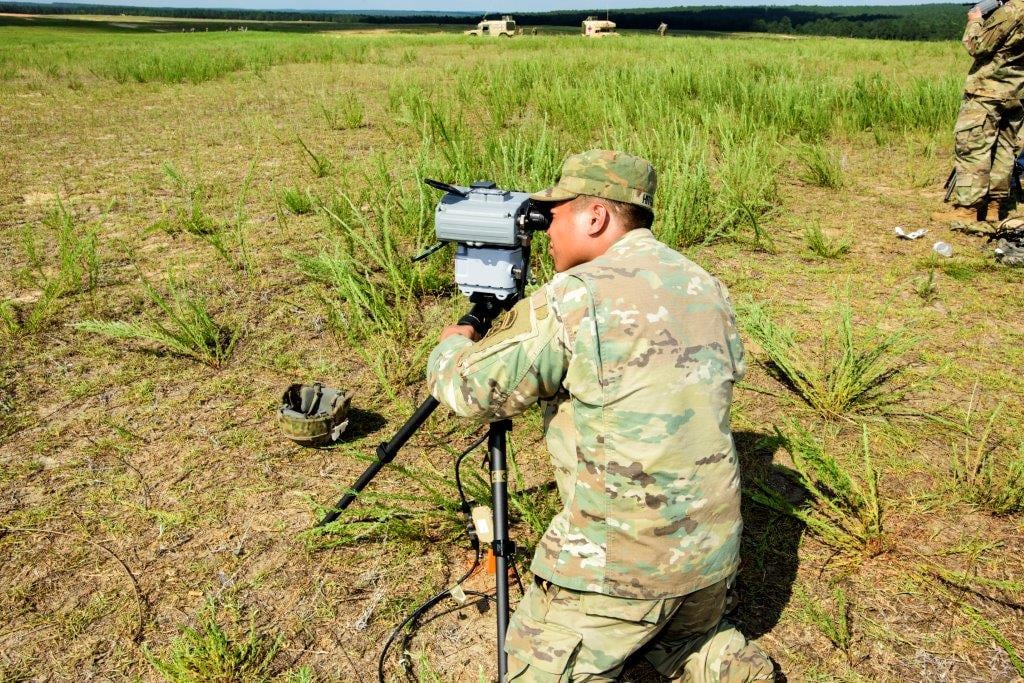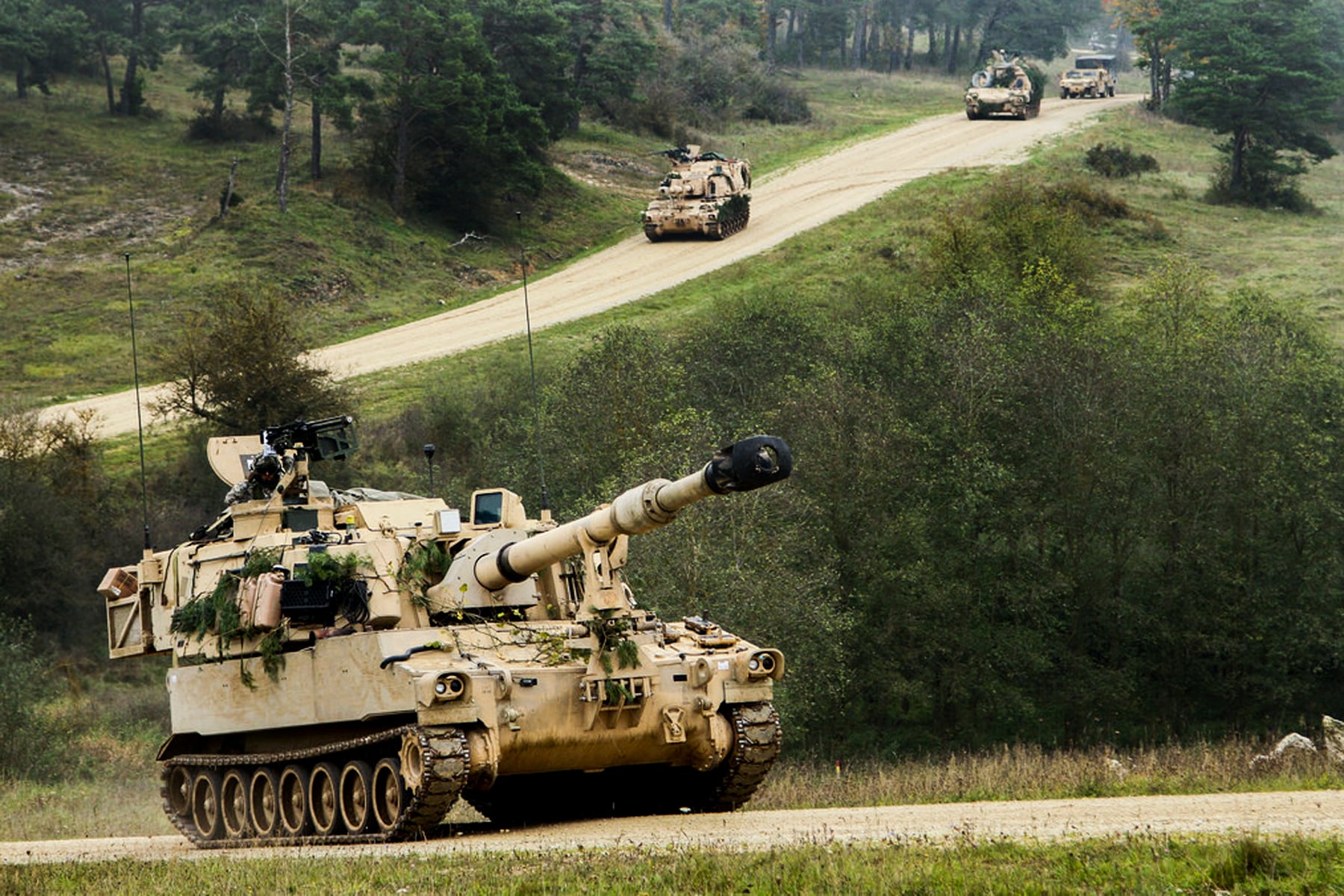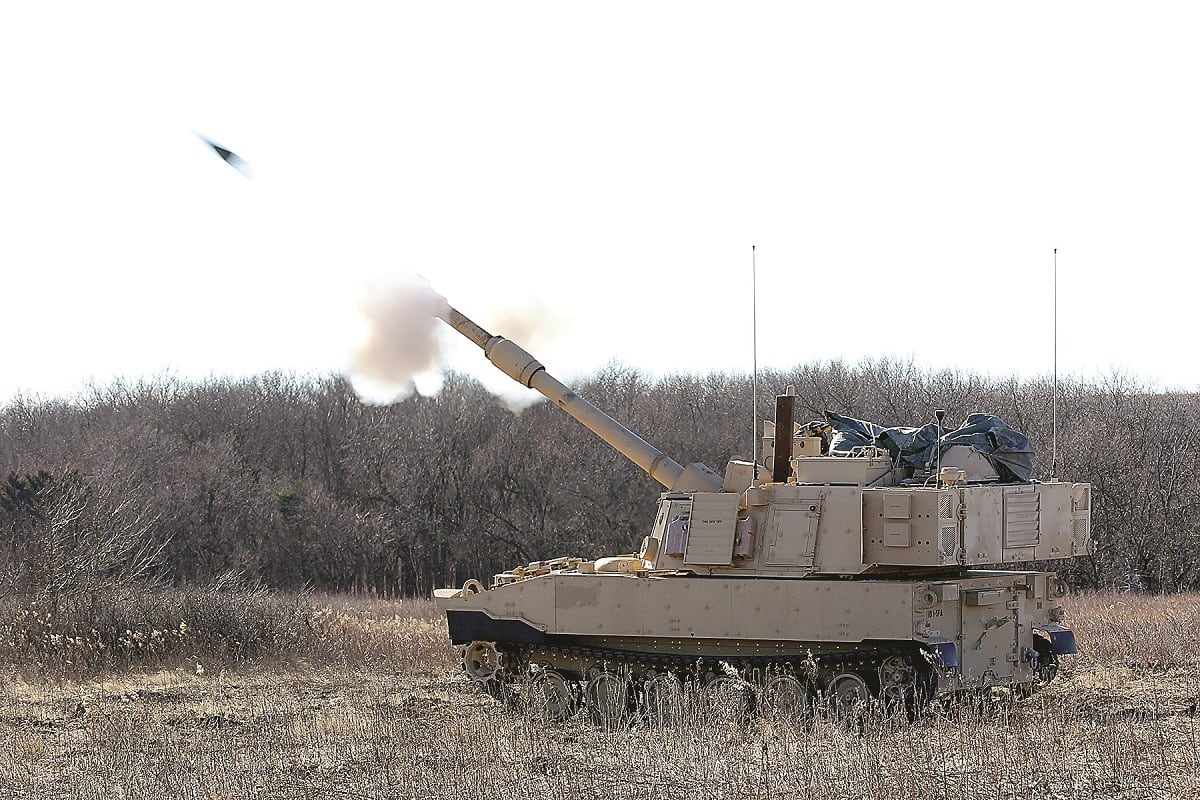Artillery soldiers could soon see the first major upgrades to the Paladin howitzer since its fielding nearly a quarter century ago.
Soldiers with 1st Battalion, 5th Field Artillery Regiment, 1st Armored Brigade Combat Team, 1st Infantry Division performed first stage test fires of the M109A7 Paladin in December and will continue test fires through early this year, according to a release from the Big Red One.
Changes include interior upgrades to accommodate the crew and hold more rounds. Developers have also increased exterior armor protection, which one soldier said dampened the noise and reduced blast overpressure — the shock wave produced by firing the 155mm round.
“To fire, it is far better than the old system. It weighs a little more so the recoil isn’t as bad,” said Staff Sgt. Eric Doriot, chief of section in Battery B, 1st Battalion.
The 1st Battalion is slated to be the first to field the new system.
RELATED

A major upgrade to the system will benefit the Paladin driver.
“The driver’s hull has a new system that allows them to drive daytime or nighttime in various weather [conditions], and it won’t affect them as bad while driving with [night-vision goggles],” said 1st Lt. Sabina Montgomery, 2nd Platoon leader, Battery B.
The new Paladin is the successor to the M109A6 155mm howitzer and uses the same gun and has the same cab structure. But the new system has digital displays and a 70-kilowatt, 600-volt on-board power system.
The new design also allows for the integration of the drive train and suspension that are common to the Bradley Infantry Fighting Vehicle, according to Defense News, a sister publication of Army Times.

The M109A6 Paladin was first fielded in 1994 with a total of 950 systems ordered over the subsequent five years.
A crew of four soldiers — driver, gunner, commander and loader — operate the vehicle. The system can fire a round in under 60 seconds.
In 2005, modification kits allowed the Paladin to use the modular artillery charge system and 155mm precision-guided, extended-range XM92 Excalibur projectile.
The MACS uses a “build-a-charge” incremental-based system that uses a combination of charges to propel the round. That system eliminates safety problems related to unused propellant, leaves no residue in the breech and removes the need to cut and retie bag charges, according to General Dynamics, developer of the charge system.
The Excalibur projectile, developed by Raytheon, increased artillery ranges and accuracy.
The Army awarded the $688 million contract to BAE Systems in 2013 to produce the upgraded Paladin, according to Army Technology.
The service has plans to obtain 580 sets, expected to be in service through 2050, and that contract has the potential to yield $1.7 billion. Initial production began in 2014 and full-rate production is expected to begin this year.
Eighteen vehicle sets, which included the M992A3 carrier ammunition vehicles, were initially produced, the first delivered in 2015.
Todd South has written about crime, courts, government and the military for multiple publications since 2004 and was named a 2014 Pulitzer finalist for a co-written project on witness intimidation. Todd is a Marine veteran of the Iraq War.




